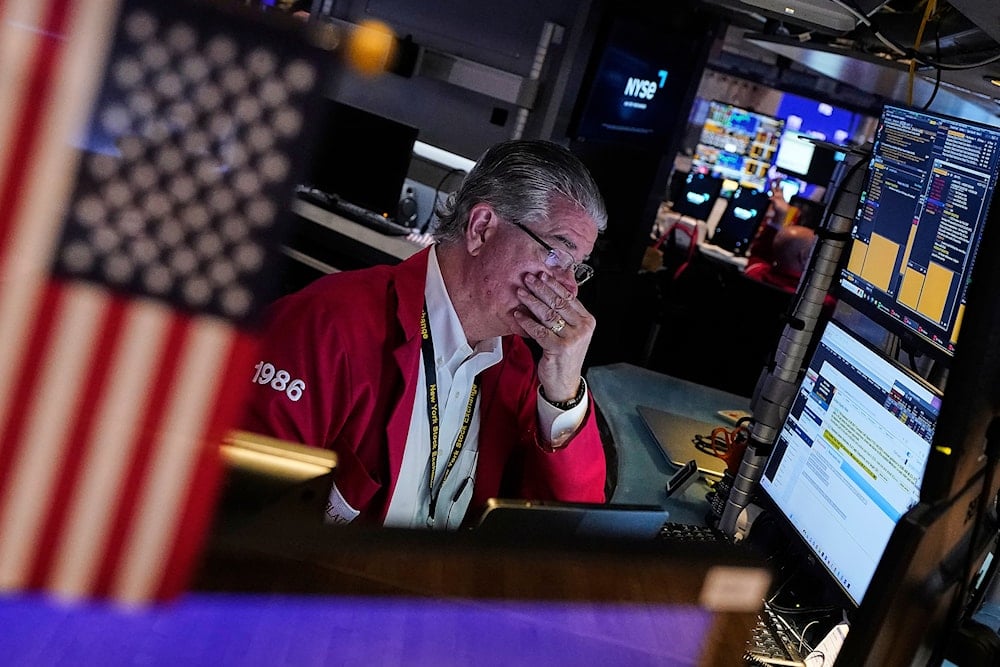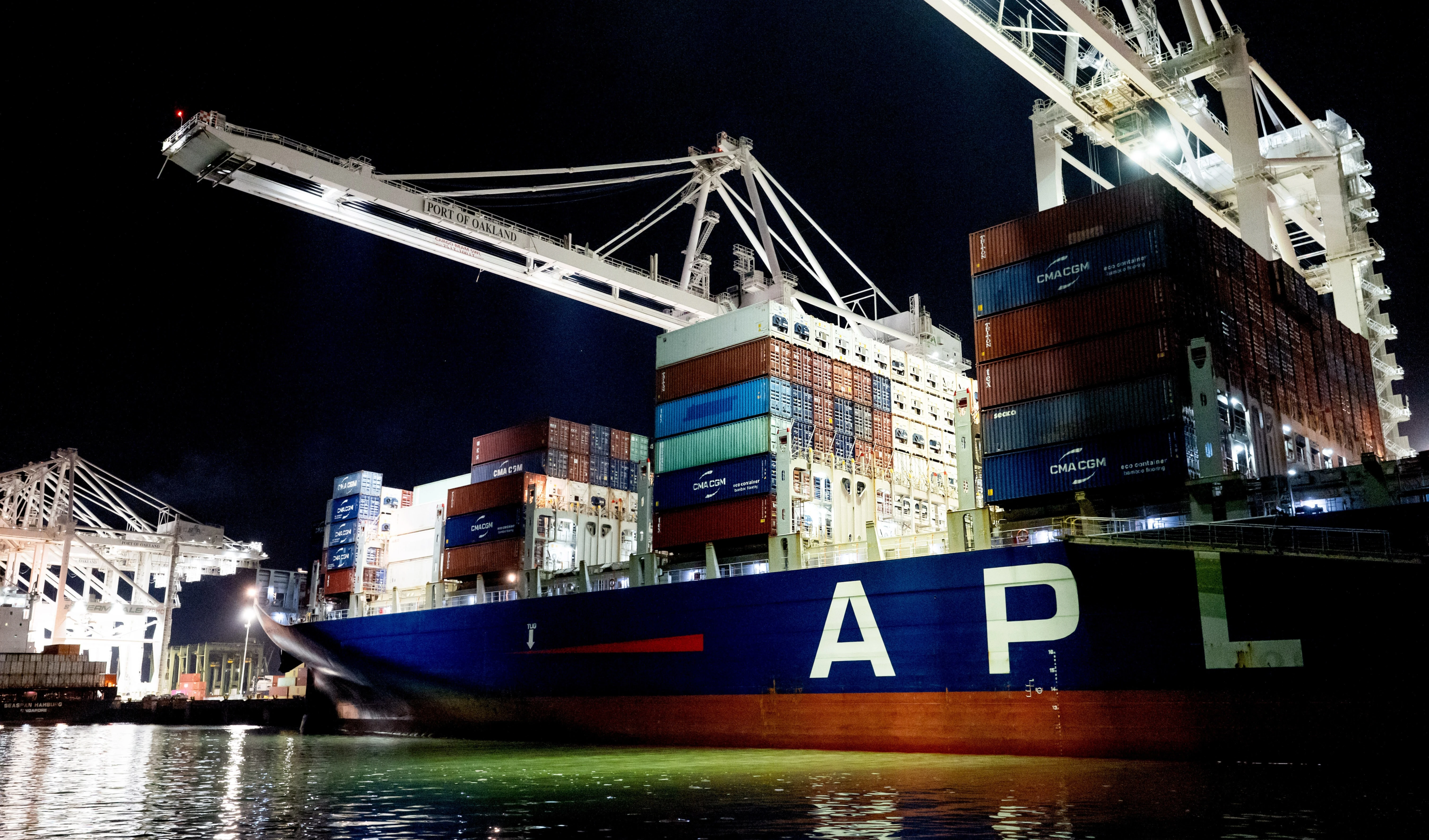US to cut 'de minimis' tariff on China shipments to 54% from 120%
The US reduces its de minimis tariff on China shipments from 120% to 54% and keeps a $100 flat fee, following a trade truce with Beijing.
-

Trader Daniel Kryger works on the floor of the New York Stock Exchange on May 5, 2025. (AP Photo/Richard Drew, File)
The United States is set to reduce the de minimis tariff on China shipments from 120% to 54%, while retaining a $100 flat fee, according to a White House executive order issued Monday.
The updated policy will take effect at 12:01 am (0401 GMT) on May 14, 2025.
This revision alters an earlier order by the Trump administration, which had planned to impose a flat $200 duty or a 120% tariff starting in June. The change affects shipments valued up to $800 sent via postal services, which previously benefited from minimal inspections and duty-free status.
New tariff rate set at 54% with $100 flat fee
The White House confirmed that the planned $200 flat fee has been shelved, and the current $100 fee will remain in place. This adjustment is part of a broader reevaluation of trade policy following complaints that the old system was exploited by foreign retailers and traffickers.
In February, US President Donald Trump had eliminated the de minimis exemption, citing concerns over e-commerce giants such as Shein and Temu and the flow of illicit goods, including fentanyl. His administration imposed a 120% tax on the proposed $200 flat fee, which has now been rolled back.
The tariff reduction follows the announcement of a US-China trade truce, with both sides agreeing to dismantle most of the tariffs imposed since early April. The development signals a significant de-escalation in trade tensions between the world’s two largest economies.
Impact on Shein, Temu, and Amazon
Companies like Temu, Shein, and Amazon, major users of the de minimis exemption, have not commented on the revised order. The exemption enabled them to ship low-value items directly to US consumers without facing duties, contributing to a surge in tax-free imports.
More than 90% of all packages entering the US have used the de minimis channel, with about 60% originating from China. This has raised alarms about unfair competition and insufficient oversight.
The de minimis rule, first introduced in 1938, has come under bipartisan scrutiny in the US.
Lawmakers from both major US parties argue that the policy enables an influx of low-cost Chinese goods that undercut American manufacturers, while it has been cited as a cover for fentanyl smuggling and the importation of other illicit substances.
On Monday, the United States and China agreed to significantly reduce tariffs on each other’s goods, marking a breakthrough in a years-long trade war that has disrupted global supply chains and intensified economic uncertainty.
The announcement came following a round of high-level negotiations in Geneva, the first in-person talks since Trump returned to office.
Under the new US-China tariff deal, both sides will implement a 90-day pause on new trade measures and lower existing tariffs from over 100% to 10%.
“This is a step toward balanced trade and mutual economic stability,” said US Treasury Secretary Scott Bessent, speaking alongside US Trade Representative Jamieson Greer, and “Both countries represented their national interest very well."

 3 Min Read
3 Min Read









